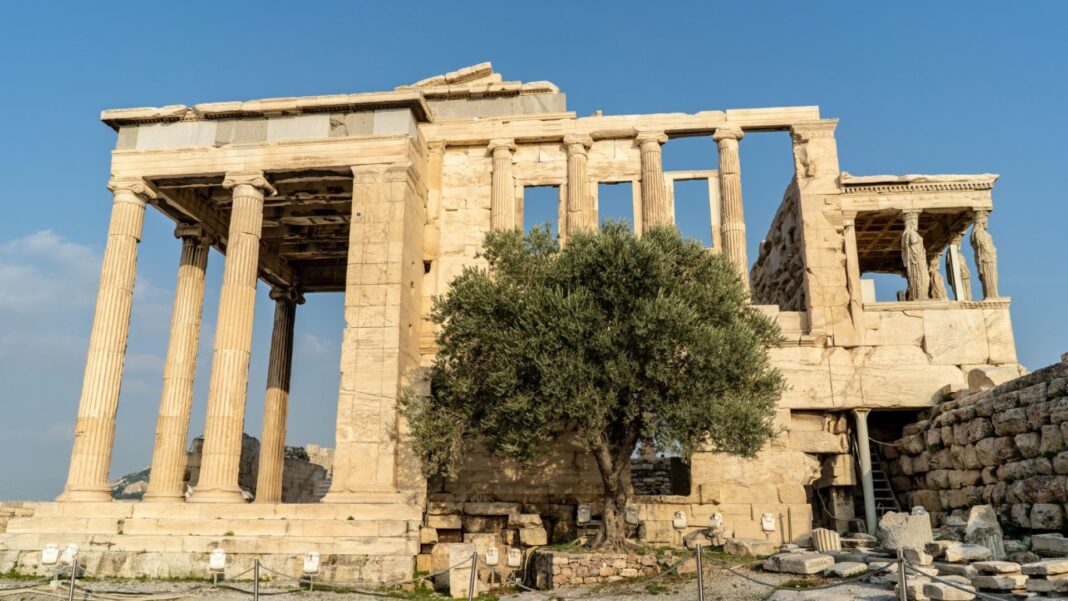According to legend, the sacred olive is the recipient of a tree personally planted by the goddess Athena
You have certainly seen many olive trees in Greece, but there is one tree that is so sacred that it is said that its history can be traced back to the time when the goddess Athena personally planted it.
In ancient Greece, the olive branch was a symbol of peace, and the word “moria” refers to sacred olive trees, which because of their importance are owned by the state. The olive tree that grows on the Acropolis of Athens is the first such sacred “moria”.
Although not the original olive tree worshiped by the Athenians 2,500 years ago, it grows in roughly the same location and is an impressive symbol of centuries of care and dedication.
The legend of the sacred olive
According to legend, Zeus offered Poseidon and Athens to compete over who would patronize the newly founded city of Athens. For this purpose, the two had to offer gifts to its inhabitants. The first was Poseidon, who drove his trident into the rock near the Acropolis and from there gushed a spring of salt water. Athens personally planted an olive tree. The water from the spring of Poseidon was not drinkable, so the Athenians chose the gift of Athens and named the city after it.
The olive through the centuries
Since then, there has always been an olive tree in this place on the Acropolis. This story exists not only in ancient Greek myths, but is also immortalized by a stone with sculptures at the western end of the Parthenon.
The legendary olive tree acquired a temple – Erechtheion, which still rises on the Acropolis in honor of the competition between Athens and Poseidon and the mythical founder of Athens, King Erechtheus. In Erechtheion itself there are shrines dedicated to the two gods, as well as to Hephaestus and Erechtheus.
There are legends about the misfortunes of the olive tree over the centuries. When the Persian king Xerxes swept Greece in 480 BC, the Acropolis was set on fire, and the sacred olive was cremated with it. According to the story of Herodotus, however, the tree sprouted again on the same day and to a height of almost a meter! After the devastation, the seeds of this tree were sown miles around Athens to grow around the city olive groves of divine origin.
During World War II, the Acropolis was severely damaged by Nazi bombings, and with it the olive tree. A branch of it was nevertheless saved and in 1952 it was planted again in its original place.
How to find it: The olive tree is located on the west side of the Erechtheion in the Acropolis.











